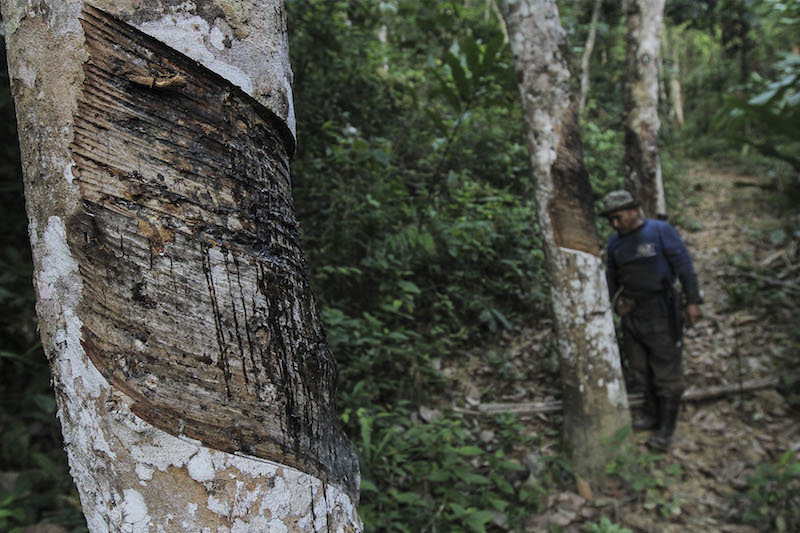KUALA LUMPUR, April 15 — Malaysia’s natural rubber (NR) production decreased by 39 per cent month-on-month (m-o-m) to 29,920 tonnes in February 2022 against 49,087 tonnes in January 2022, said the Department of Statistics Malaysia (DoSM).
Chief statistician Datuk Seri Mohd Uzir Mahidin said year-on-year (y-o-y), consumption also showed that the production of NR decreased by 40 per cent from February 2021 of 49,840 tonnes.
“Production of NR in February 2022 for Malaysia was mainly contributed by smallholders sector (88.4 per cent) compared to estates sector (11.6 per cent),” he said in a statement today.
Mohd Uzir said the decline in NR production was in line with The Association of Natural Rubber Producing countries (ANRPC) January-February monthly report, which stated that despite the positive sentiment in the NR market, there were also a number of challenges that may hinder its growth.
In terms of supply, it was heavily influenced by adverse climate, manpower shortages in natural rubber-producing countries amid the increased proliferation in Covid-19 variants and Omicron cases around the world and a tapping off season that may exacerbate raw material supply congestion in the month ahead.
Total stocks of natural rubber increased 2.8 per cent in February 2022 to 318,699 tonnes as compared to 310,002 tonnes in January 2022.
Rubber processors factory was contributing 93.5 per cent of the final stocks followed by rubber consumers factory (6.4 per cent) and rubber estates (0.1 per cent).
Exports of Malaysia's NR amounted to 47,682 tonnes in February 2022, a decrease of 6.8 per cent as against January 2022 (51,160 tonnes).
China continued to dominate as the highest importer of natural rubber with 50.8 per cent of total exports in February 2022 followed by the United States (5.1 per cent), Germany (3.5 per cent), Turkey (3.4 per cent) and Brazil (2.1 per cent).
“The export performance was contributed by natural rubber-based products such as gloves, tyre, tube, rubber thread and condom.
Gloves were the main exports of rubber-based products with a value of RM1.9 billion in February 2022, a decrease of 13.5 per cent compared with January 2022 of RM2.2 billion,” he said.
According to DoSM, an analysis of the average monthly price showed that latex concentrate recorded an increase of 15 per cent to 658.14 sen per kilogramme (kg) in February 2022 versus 572.08 sen per kg in January 2022.
Meanwhile, scrap was 0.6 per cent higher at 606.41 sen per kg in February 2022 against 603.05 sen per kg in January 2022.
Similar trend was also observed for all Standard Malaysian Rubber (SMR) which increased between 0.9 and 14.9 per cent.
Citing the World Bank Commodity Price Data report, DoSM said the Technically Specified Rubber (TSR 20) price increased by 0.6 per cent from US$1.78 per kg to US$1.79 per kg (US$1=RM4.23) per kg m-o-m, while the Singapore/Malaysia type increased 7.0 per cent from US$1.97 per kg to US$2.11 per kg.
On the Russia-Ukraine war, Mohd Uzir said prices of rubber in the international market would be affected as Russia is a major exporter of synthetic rubber, mainly polybutadiene rubber (PBR) and isoprene rubber (IR). One of its main end uses is the production of tyres.
In 2020, Russia exported US$1.34 billion in synthetic rubber, making it the sixth largest exporter of synthetic rubber in the world. — Bernama






















